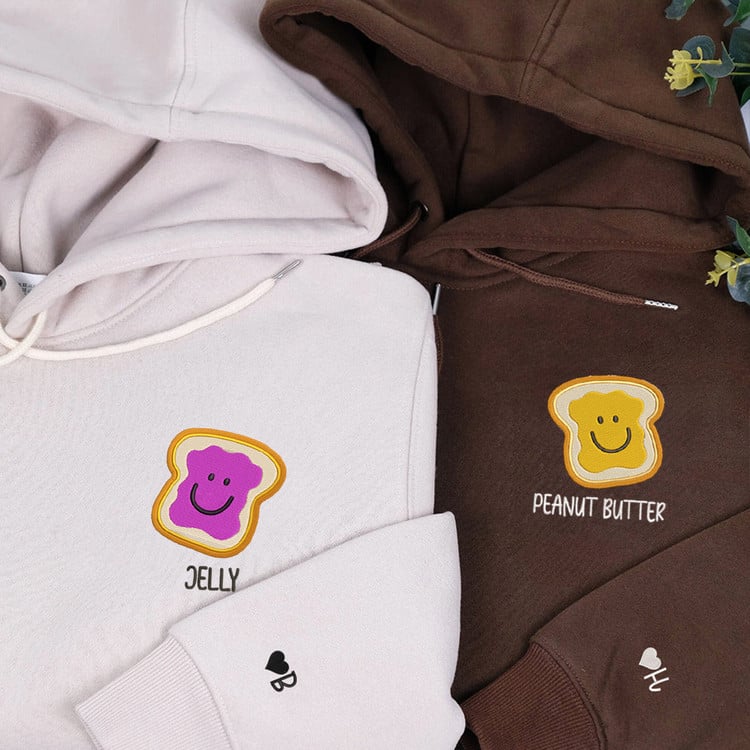Blog
The Timeless Art of Embroidered Clothing: Weaving Tradition into Modern Fashion
The Timeless Art of Embroidered Clothing: Weaving Tradition into Modern Fashion
Embroidery, one of the oldest forms of decorative art, has adorned garments for centuries, transcending cultures and evolving with fashion trends. Today, embroidered clothing not only serves as a testament to rich cultural heritage but also stands out in contemporary wardrobes for its intricate beauty and personalized flair. In this blog post, we’ll explore the allure of embroidered clothing, its historical significance, various styles, and why it’s making a strong comeback in modern fashion.
A Stitch Through History
Embroidery dates back thousands of years, with evidence of its practice found in ancient civilizations such as Egypt, China, India, and Greece. Originally, embroidery was a method to embellish garments, signify social status, and express cultural identity. Each region developed its unique techniques and motifs, reflecting local traditions and stories.
For instance:
- Chinese Embroidery: Known for its meticulous detail and vibrant colors, Chinese embroidery often features nature-inspired motifs like flowers and birds.
- Indian Embroidery: Rich in diversity, Indian embroidery includes styles like Zardozi, Chikankari, and Kantha, each showcasing elaborate patterns and intricate needlework.
- European Embroidery: From the opulent tapestries of the Middle Ages to the delicate lacework of the Victorian era, European embroidery has long been associated with elegance and refinement.
Types of Embroidery Techniques
Embroidery encompasses a wide array of techniques, each offering a distinct aesthetic:
- Hand Embroidery: The traditional method using needles and threads, allowing for intricate detailing and personalization.
- Machine Embroidery: Utilizes computerized machines to replicate designs quickly, ideal for mass production while maintaining consistency.
- Appliqué: Involves stitching fabric pieces onto a base garment to create patterns or images.
- Bead Embroidery: Incorporates beads and sequins to add texture and sparkle to designs.
- Cross-Stitch: Forms images through a series of X-shaped stitches, popular in both decorative and practical applications.
Modern Embroidery in Fashion
In recent years, embroidery has experienced a resurgence in the fashion industry, blending traditional craftsmanship with contemporary designs. Here’s why embroidered clothing is captivating today’s fashionistas:
1. Personalization and Uniqueness
Hand-embroidered pieces offer a level of uniqueness that mass-produced items can’t match. Each stitch is a labor of love, making every garment one-of-a-kind. Brands and designers are leveraging this by offering customizable embroidery options, allowing customers to add personal touches to their clothing.
2. Sustainability and Slow Fashion
As the fashion industry moves towards sustainability, embroidered clothing aligns perfectly with the slow fashion movement. These garments are often crafted with care and longevity in mind, encouraging consumers to invest in timeless pieces rather than fleeting trends.
3. Versatility Across Styles
Embroidery seamlessly integrates into various fashion styles, from bohemian and vintage to minimalist and haute couture. Whether it’s subtle detailing on a denim jacket or bold patterns on a maxi dress, embroidery enhances the aesthetic without overpowering it.
4. Cultural Expression
In a globalized world, embroidered clothing serves as a medium for cultural expression and appreciation. Designers draw inspiration from diverse embroidery traditions, creating fusion pieces that honor heritage while embracing modernity.
Caring for Embroidered Garments
To ensure the longevity of embroidered clothing, proper care is essential:
- Washing: Hand wash embroidered items or use a gentle cycle with cold water. Avoid harsh detergents that can weaken threads.
- Drying: Air dry embroidered garments away from direct sunlight to prevent colors from fading.
- Ironing: Iron on the reverse side using a low heat setting. Place a cloth between the iron and the embroidery to protect the threads.
- Storage: Store embroidered clothes in a cool, dry place. Use padded hangers for delicate pieces to maintain their shape.
Embracing Embroidery: A Fashion Statement
Embroidered clothing is more than just fabric adorned with threads; it’s a celebration of artistry, culture, and individuality. Whether you’re drawn to the intricate patterns of traditional designs or the sleek lines of modern embroidery, incorporating these pieces into your wardrobe can add depth and character to your style.
As fashion continues to evolve, the timeless charm of embroidery remains steadfast, proving that some traditions are worth preserving and reinventing. So, the next time you browse through your closet or shop for new attire, consider the stories woven into embroidered garments and let them become a part of your personal fashion narrative.
Stay Connected!
If you enjoyed this deep dive into embroidered clothing, subscribe to our blog for more insights into fashion trends, styling tips, and the art behind your favorite garments. Share your favorite embroidered pieces in the comments below—we’d love to see how you incorporate this beautiful art into your wardrobe!

